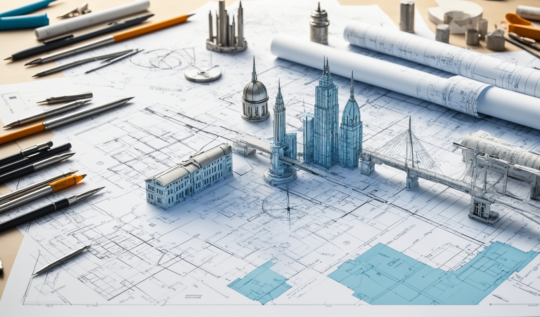Building Resilience: Designing Disaster-Prepared Churches, Hotels, and Commercial Spaces
Disaster resilience in architecture goes beyond structural strength—it’s about designing spaces that protect people, property, and community resources in the face of natural hazards. From churches that serve as community safe havens to hotels and retail centers that support local economies, resilience-focused design can transform these buildings into true pillars of safety and continuity. This article explores key strategies for disaster-proofing churches, hotels, and commercial buildings to withstand floods, earthquakes, and hurricanes.
Understanding the Importance of Resilient Design in Churches and Commercial Spaces
Resilient building design protects both the occupants and the structure itself, reducing risks for everyone who uses these spaces. Whether it’s a church that doubles as a shelter, a hotel housing guests during extreme weather, or a retail center safeguarding its assets, disaster resilience can ensure these buildings continue to serve their purpose even after natural disasters. Here’s why it matters:
Multi-Use Community and Commercial Roles: Churches, hotels, and commercial spaces like retail centers often play essential community roles during emergencies. Churches may serve as emergency shelters, while hotels provide temporary refuge, and retail centers house supplies and resources. Disaster-proofing these spaces enhances community safety.
Protecting Occupants and Assets: Resilient design safeguards people, historic artifacts, valuable merchandise, and equipment. By choosing materials and design techniques that prioritize durability, owners protect both people and the physical assets essential to their operations.
Minimizing Disruption: Resilient buildings experience less downtime after a disaster, allowing churches, hotels, and retail spaces to resume services more quickly. For commercial spaces, this translates to faster business recovery and less economic loss.
Master Planning vs. Fixed Placement in Resilient Design
One of the most significant differences in resilient building design lies in the location and site flexibility. Churches and hotels, for example, often have more space, allowing for strategic planning. Commercial buildings like retail centers, however, are often limited to specific plots in urban areas. Here’s how resilience planning differs for each:
Master Planning and Site Flexibility for Churches and Hotels: With larger properties, churches and hotels can master plan their sites, selecting optimal locations for each building on the property. This flexibility allows churches and hotels to orient buildings to minimize wind load, reduce flood exposure, or manage stormwater through effective drainage systems.
Fixed Placement Constraints for Retail and Urban Commercial Buildings: Unlike churches and hotels, retail centers or restaurants typically occupy fixed urban locations, limiting site flexibility. For these buildings, resilient design strategies focus more on impact-resistant materials, reinforced structures, and comprehensive drainage solutions.
Site-Specific Resilience for Flood, Earthquake, and Wind-Prone Areas
Regional hazards should shape the resilience strategies for any building. Whether in a floodplain, on an earthquake fault line, or along a hurricane-prone coast, each environment requires distinct design approaches.
Location and Risk Assessment: The first step in resilient design is understanding the specific risks associated with the site. For flood-prone areas, elevation and waterproofing are key, while buildings in seismic zones should incorporate earthquake-resistant materials. Wind-prone locations benefit from aerodynamic building shapes and reinforced structures that resist high-pressure winds.
Building Orientation and Wind Load: For properties with site flexibility, such as churches and hotels, orienting the building to reduce direct wind impact can minimize structural strain. For commercial buildings with fixed orientations, designs should emphasize reinforced materials, impact-resistant glass, and durable exterior walls to counteract high winds.
Energy Resilience and Backup Power: Power resilience is critical in all building types. Backup generators or solar energy systems with battery storage provide essential energy for lighting, HVAC, and communication during emergencies. This is particularly important for buildings that serve community functions, such as hotels, churches, or retail centers with essential goods.
Selecting Disaster-Resilient Materials for Flood, Earthquake, and Wind Resistance
Material selection is crucial to building resilience, especially when constructing for flood, earthquake, and wind resistance. Here’s a closer look at how material choice affects disaster resilience:
Flood-Resistant Materials: Buildings in flood-prone areas benefit from water-resistant materials like masonry, treated wood, and concrete, which resist mold and structural damage. Non-porous materials and waterproof sealants on floors and walls can also help minimize flood impact.
Earthquake-Resistant Materials: For buildings in seismic regions, flexible materials like steel reinforcements and flexible concrete help absorb seismic energy. Seismic retrofitting, which strengthens existing buildings, is another effective strategy for earthquake resilience.
Wind-Resistant Materials: Wind-prone areas require impact-resistant glass, reinforced door frames, and metal roofing to protect against high winds and flying debris. Reinforced exterior walls add an extra layer of protection for buildings unable to change their orientation.
Structural Reinforcement for Flood, Wind, and Earthquake Resilience
Resilience-focused building requires specific structural reinforcements to protect against the physical impacts of natural disasters. Here are essential techniques for flood, wind, and earthquake-prone buildings:
Load-Bearing Wall and Foundation Reinforcement: Reinforcing load-bearing walls and foundations provides extra support for buildings in areas with high wind or seismic risk. For example, reinforced walls made from concrete and steel can withstand greater pressure and impact.
Seismic Isolation and Damping: In earthquake-prone regions, base isolation and damping systems reduce building sway by absorbing seismic energy, preserving the structure and improving occupant safety.
Wind-Resistant Design Elements: Impact-resistant windows, doors, and reinforced frames reduce the risk of structural compromise from flying debris and high-pressure winds, especially crucial in fixed-location commercial buildings.
Designing Flexible Spaces for Emergency Sheltering and Community Use
Flexible spaces that can adapt to emergency situations enhance resilience and provide critical shelter during disasters. Here’s how buildings can incorporate adaptability for sheltering and community needs:
Emergency Shelter Spaces and Safe Rooms: Identify areas in churches, hotels, or commercial buildings that can function as safe rooms during disasters. Reinforced spaces with bathrooms, storage, and medical supplies make these areas more suitable for extended shelter use.
Modular Furniture and Open Layouts: Modular furniture and open layouts enable buildings to adapt quickly in emergencies, whether for community sheltering or for supporting emergency response personnel.
Dedicated Storage for Emergency Supplies: Accessible storage for emergency kits, food, water, and medical supplies is essential in buildings expected to serve the public during disasters.
Retrofit Options for Enhancing Disaster Resilience in Existing Buildings
Retrofitting can significantly enhance resilience in older buildings or structures that weren’t originally built for extreme events. Here are practical retrofit options for improving disaster resilience:
Seismic and Structural Retrofitting: In earthquake-prone areas, structural retrofitting involves reinforcing walls, foundations, and structural connections to withstand seismic activity.
Floodproofing and Drainage Enhancements: Buildings at risk of flooding benefit from drainage improvements, sump pumps, and waterproof barriers. These additions prevent water from damaging basements, foundations, and lower floors.
HVAC and Ventilation Upgrades: For buildings in areas prone to wildfires or floods, HVAC systems with air filtration and humidity control can improve indoor air quality and reduce moisture damage.
Investing in Resilient Design for Churches and Commercial Buildings
Designing churches, hotels, and commercial buildings with disaster resilience in mind helps protect occupants, preserve assets, and minimize downtime. By prioritizing flood, earthquake, and wind resistance, building owners and architects can ensure these spaces are safe and functional during extreme weather events. Clear wayfinding also plays a critical role in emergencies, directing occupants to exits and safe areas. To explore effective wayfinding strategies, see our article on Wayfinding and Signage in Church Spaces.
Whether you’re planning a new project or upgrading an existing structure, resilient design is a worthwhile investment in safety, continuity, and community support. Reach out to our team for a consultation on how resilient building design can fortify your church, hotel, or commercial space against natural disasters.





